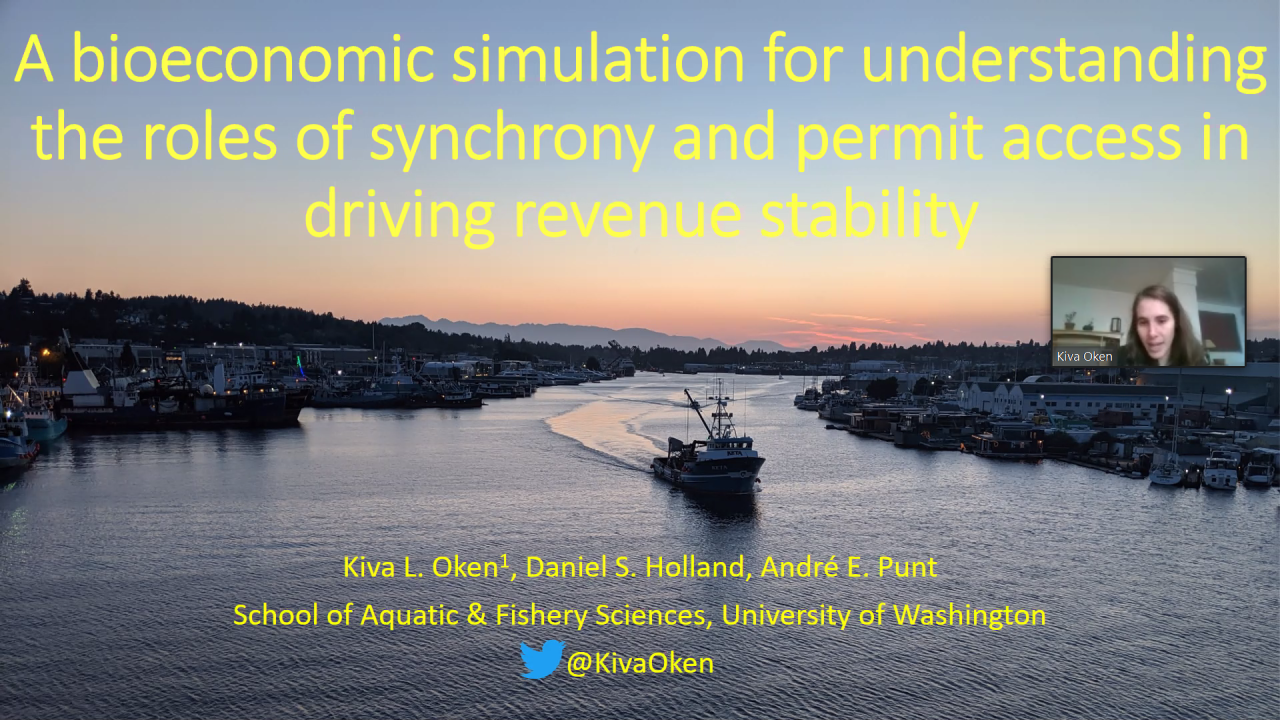
Lab Seminar - A bioeconomic simulation for understanding the roles of synchrony and permit access in driving revenue stability
Kiva Oken, Assistant Professor of the Department of Wildlife, Fish and Conservation Biology shared her research on management of marine fisheries. Diversification of fishing portfolios of individuals, vessels, and communities can stabilize interannual variability of income at each level of organization. This portfolio effect is stronger when the populations within a portfolio respond in different ways to environmental changes. However, many modern management policies may be reducing the diversity of fishing portfolios as access to multiple permits becomes infeasible. Here, Kiva and coauthors simulate fisheries linked by cross-participation, loosely based around Dungness crab (Metacarcinus magister), Chinook salmon (Oncorhynchus tshawytscha), and groundfish (Sablefish; Anoplopoma fimbria) fisheries on the U.S. West Coast, and explore the dynamics of the system under various ecological and regulatory scenarios. Specifically, Kiva and coathors look at how access to multiple permits and population synchrony interact to influence revenue stability. Asynchronous population dynamics do stabilize revenue, but only when the biomass available to the fishery undergoes large year-to-year fluctuations. Increasing the number of vessels with access to multiple permits decreases their temporal revenue variability, but also decreases average revenue per individual as the same amount of biomass is divided among a larger group. Limited access fisheries have many ecological and social benefits, but in forcing individuals to commit to a smaller portfolio of fisheries, reduces individuals’ resilience to declines in certain populations that may arise due to factors such as climate change.